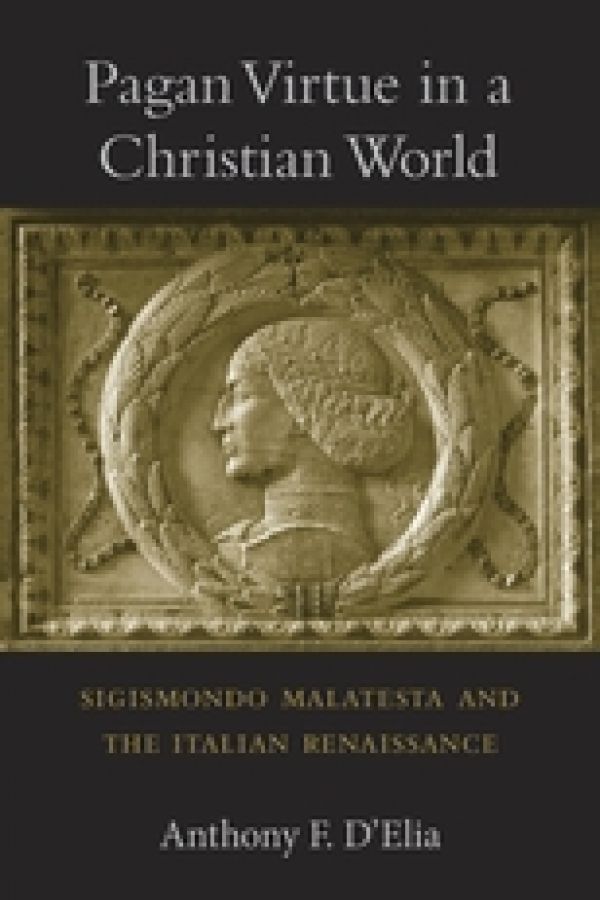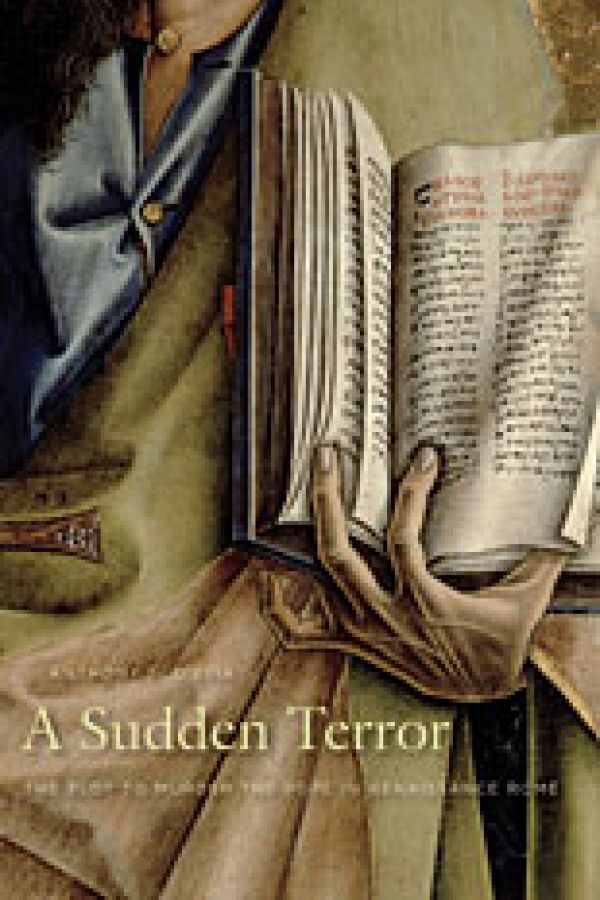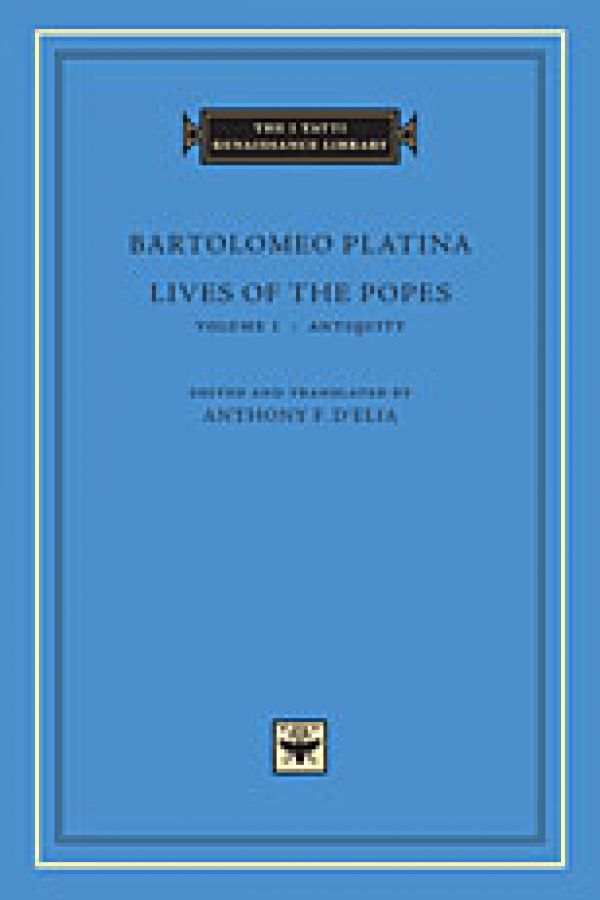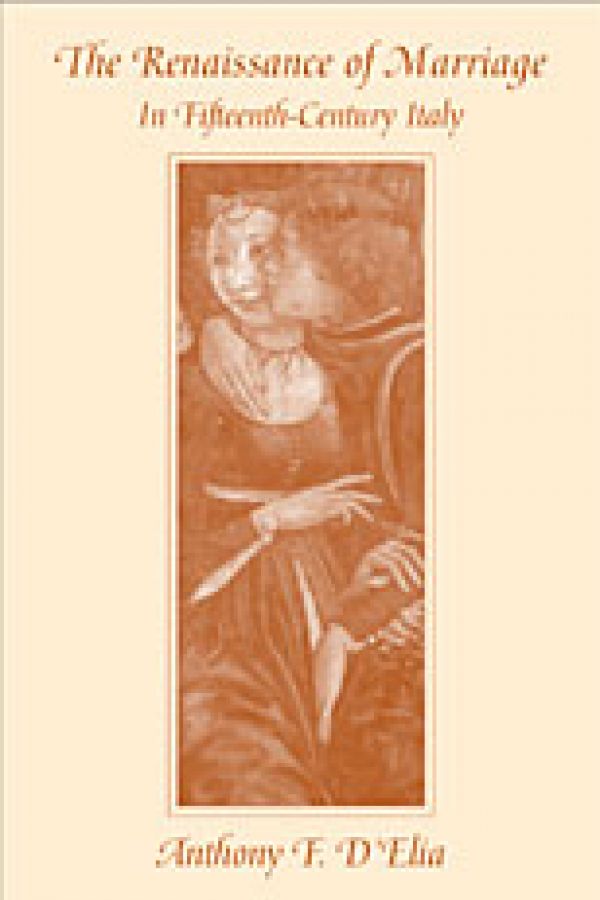My research focuses on the intellectual and social history of the Italian Renaissance, especially the reception of Classical Antiquity and pagan philosophy and religion in the predominantly Christian world of Renaissance Europe. I am particularly interested in Latin literature, rhetoric, political propaganda, war, masculinity, gender, sexuality, women, virtue, and violence.
Education: My training-education was in Classics (Latin and Greek languages & literature) and History. After completing a three-year degree in Latin Letters (1985-1988) at the Gregorian University in Rome, Italy, under the papal Latinist Reginald Foster, I finished a four-year degree in Classics (Latin and Greek Literature) at Trinity College Dublin, Ireland (1988-1992). I then sold ladies handbags for Macy's California for one year, where my training in ancient rhetoric and fluency in Italian helped me earn top sales (and high commissions selling Fendi handbags). After this brief year-long sojourn in the business world, I finished a Masters and PhD in History at Harvard University (1993-2000). For my dissertation, I read over two hundred manuscripts of fifteenth-century Latin wedding orations and treatises on marriage and sex in the Vatican Library and other libraries in Italy (Florence, Venice, Milan), Paris, and London U.K.
Teaching: In 2000 I started teaching History at Queen's University and then Latin along with some Greek in Classics (from ca. 2012).
In Classics, I teach advanced Latin seminars on major authors - past courses have focused on Cicero, Livy, Virgil, Horace, Catullus, Tacitus, Caesar, Seneca, Sallust, Juvenal, Augustine, Petrarch, Poggio Bracciolini, Lorenzo Valla and a few others. I have also taught advanced Greek authors (Plato and Thucydides), but my specialty is Latin.
In History, I regularly teach three big lecture courses: 1) Western Civilization-Great Books from Antiquity to the Scientific Revolution (Genesis to Galileo); 2) Sport, Virtue, and Violence from Antiquity to the Early Modern World; and 3) Renaissance Europe.
I also teach more focussed seminars on topics in European History and literature, including 1) Dante's World; 2) Machiavelli's World; and 3) Early Modern European Social and Cultural History.
Current Research: I am finishing a book on Petrarch and the reception of the Roman Games in the Renaissance. The book, entitled Petrarch and the Gladiators: Virtue, Violence, and Gender in the Italian Renaissance, explores Petrarch’s response to violence, both the physical and mental forms of violence that assaulted him and his friends in the violent world of fourteenth-century Italy, and the violent spectacles and gladiator games described often with praise in ancient texts. I am particularly interested in Petrarch's appropriation of Cicero and Seneca's Stoic responses to violence, pain, suffering and death.
Publications (books): Pagan Virtue in a Christian World: Sigismondo Malatesta and the Italian Renaissance (Harvard UP 2016), explores the central problem of the Renaissance, whether the recovery and imitation of classical pagan culture created a fundamental clash with Christian values, by examining the literature and art in the court of Sigismondo Malatesta (1417-1468), Lord of Rimini. Sigismondo was a flagrant example of the tension between high pagan culture and Christian society. Pagan themes dominated his cultural patronage and public persona. Ambition was celebrated over humility, sexual pleasure over chastity, muscular athleticism over saintly asceticism, and astrological fortune over providence. Humanists and artists promoted an image of Sigismondo as an Homeric hero, a Spartan warrior, and a courageous Roman general. As a mercenary captain, Sigismondo had a reputation for treachery and even sought an alliance with the Ottoman Sultan Mehmet II. Pope Pius II despised Sigismondo so much that he canonized him to Hell while he was still living, the only reverse canonization in history. Effigies of the Lord of Rimini were burned with a placard that read “I am damned to Hell.” Sigismondo was notorious for his libido, his military conduct, and his disrespect for Christianity, and so his court is a limit case in Renaissance paganism. The very pagan qualities that the pope attacked in him were the same ideals that Sigismondo’s artists and poets celebrated. The public and vicious confrontation between Sigismondo and the pope embodied the cultural crisis of the Renaissance.
A Sudden Terror: The Plot to Murder the Pope in Renaissance Rome (Harvard UP 2009), studies fifteenth-century Rome and the origins of the modern papacy, focusing on a conspiracy to murder Pope Paul II in 1468. It begins with the plot, arrest, and torture of the twenty accused humanists; then explores the possible causes of the conspiracy as revealed in the interrogation questions, including such different motives as Church reform, republicanism, paganism, homoeroticism and sodomy, and allying with the Ottoman Sultan Mehmet II. The concluding chapters describe the pain, desperation, and loneliness that the humanists suffered in prison and the failure of pagan and Christian philosophy to console them. The work redefines humanism as a dynamic communal movement focused on the living word in dialogue.
My first book (based on my PhD dissertation), The Renaissance of Marriage in Fifteenth-Century Italy (Harvard UP 2004) explores how in advocating an ideal of marriage and sexuality, Italian humanists offered an alternative to Christian asceticism and prepared the ground for the Reformation's rejection of holy virginity. I found that ideas about marriage in humanist rhetoric related directly to the lives of Renaissance Italians and so offered a revealing window about self, gender, and society. The arguments and newly discovered sources in the book have complicated our conception of women, gender, and sexuality in the Renaissance.
I also publish editions and modern English translations of Renaissance Latin texts. These include: Bartolomeo Platina, Lives of the Popes, Volume One: Antiquity (Years 1 to 461 AD) (The I Tatti Renaissance Library, Harvard UP 2008), and Platina, Lives of the Renaissance Popes (The I Tatti Renaissance Library, Harvard UP forthcoming 2025).
Pagan Virtue in a Christian World: Sigismondo Malatesta and the Italian Renaissance
A Sudden Terror: The Plot to Murder the Pope in Renaissance Rome
Lives of the Popes, Volume 1, Antiquity
The Renaissance of Marriage in Fifteenth-Century Italy
Articles
- "Stefano Porcari's Conspiracy against Pope Nicholas V in 1453 and Republican Culture in Papal Rome." The Journal of the History of Ideas (April 2007).
- "Heroic Insubordination in the Army of Sigismondo Malatesta: Petrus Parleo's pro milite, Machiavelli, and the uses of Cicero and Livy." In Humanism and Creativity in the Italian Renaissance: Essays in Honor of Ronald G. Witt, eds. C. S. Celenza and K. Gouwens (Leiden: Brill, 2006), 31-60. "Genealogy and the Limits of Panegyric: Turks and Huns in Fifteenth-Century Epithalamia." The Sixteenth Century Journal 34.4 (Winter 2003): 973-991.
- "Genealogy and the Limits of Panegyric: Turks and Huns in Fifteenth-Century Epithalamia."The Sixteenth Century Journal 34.4 (Winter 2003): 973-991.
- "Marriage, Sexual Pleasure, and Learned Brides in the Wedding Orations of Fifteenth-Century Italy." Renaissance Quarterly 55.2 (Summer 2002): 379-433. (Awarded the Nelson Prize for best article in Renaissance Quarterly in 2002.)
Review Articles
- "The Renaissance University" in The International Journal of the Classical Tradition, (Fall 2005), 269-277. [Actual Publication; Summer 2006]
- Review Essay on Alison Knowles Frazier, Possible lives: authors and saints in Renaissance Italy (2005) for The Erasmus of Rotterdam Society Yearbook (Fall 2006), 111-116.
- Review Essay on Jennifer Speake and Thomas G. Bergin (eds.), Encyclopedia of the Renaissance and the Reformation (New York: Facts on File, Inc. 2004), for The International Journal of the Classical Tradition (Spring 2006), 621-624.
Book Reviews
- Erasmus's Controversies (CWE, Vol. 84), ed. N. H. Minnich & D. J. Sheerin (University of Toronto Press, 2005), University of Toronto Quarterly (forthcoming).
- Ronald G. Musto, Apocalypse in Rome: Cola di Rienzo and the Politics of the New Age (Berkeley:University of California Press, 2003), Renaissance Quarterly (Summer 2004).
- The Cultural Politics of Duke Cosimo I de' Medici, ed. Konrad Eisenbichler (Ashgate, 2001), Canadian Journal of Historical Research (Summer 2003).
- Dale Kent, Cosimo De' Medici and the Florentine Renaissance: The Patron's Oeuvre (Yale UP, 2000), Canadian Journal of Historical Research (Summer 2002).
Work in Progress
- Sport and the Spectacle of Violence in Antiquity and the Italian Renaissance
- Bartolomeo Platina, Lives of Christ and the Popes,The Renaissance. Contracted for The I Tatti Renaissance Library, Harvard University Press (http://www.hup.harvard.edu/itatti/index.html). Translation, Latin Edition, Notes and Introduction.




